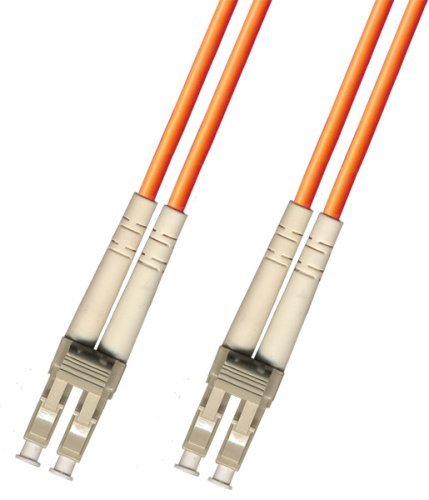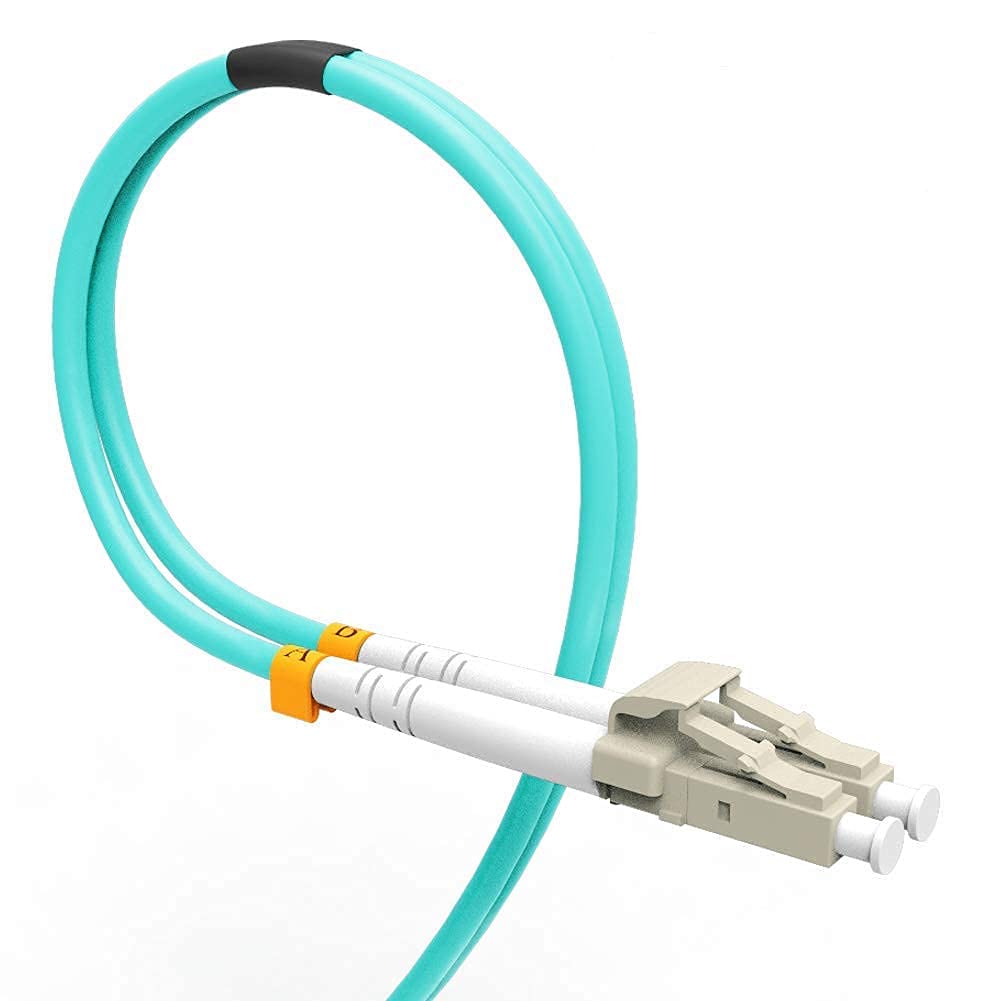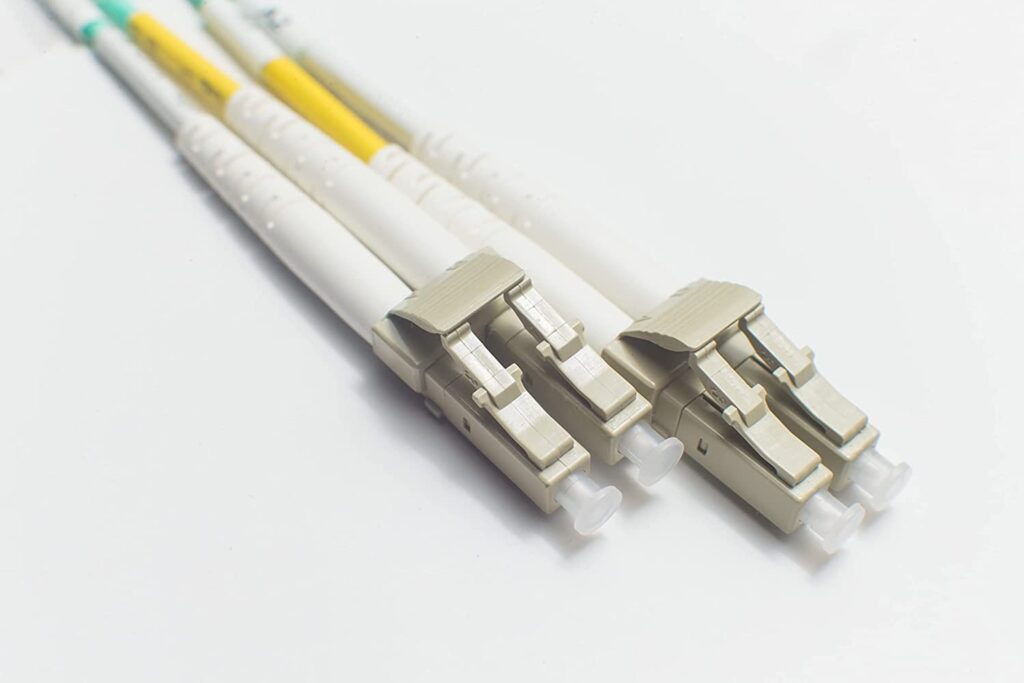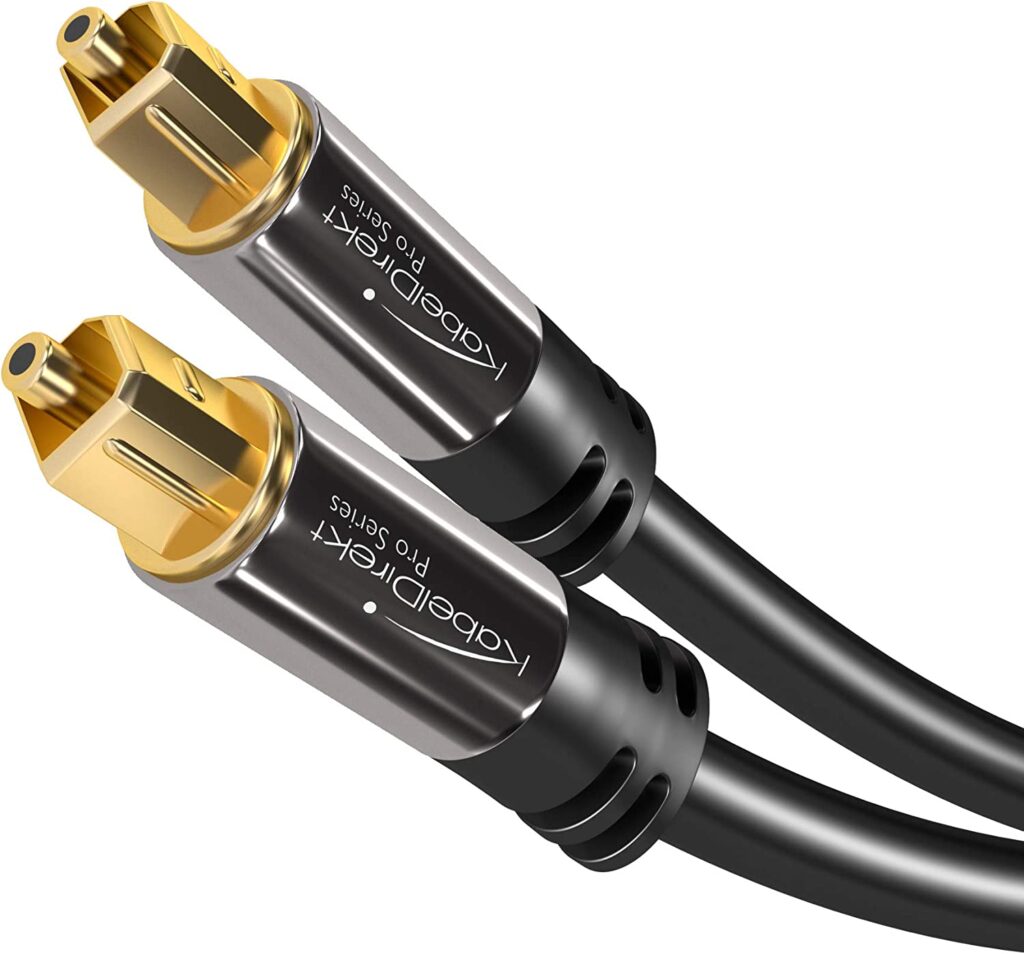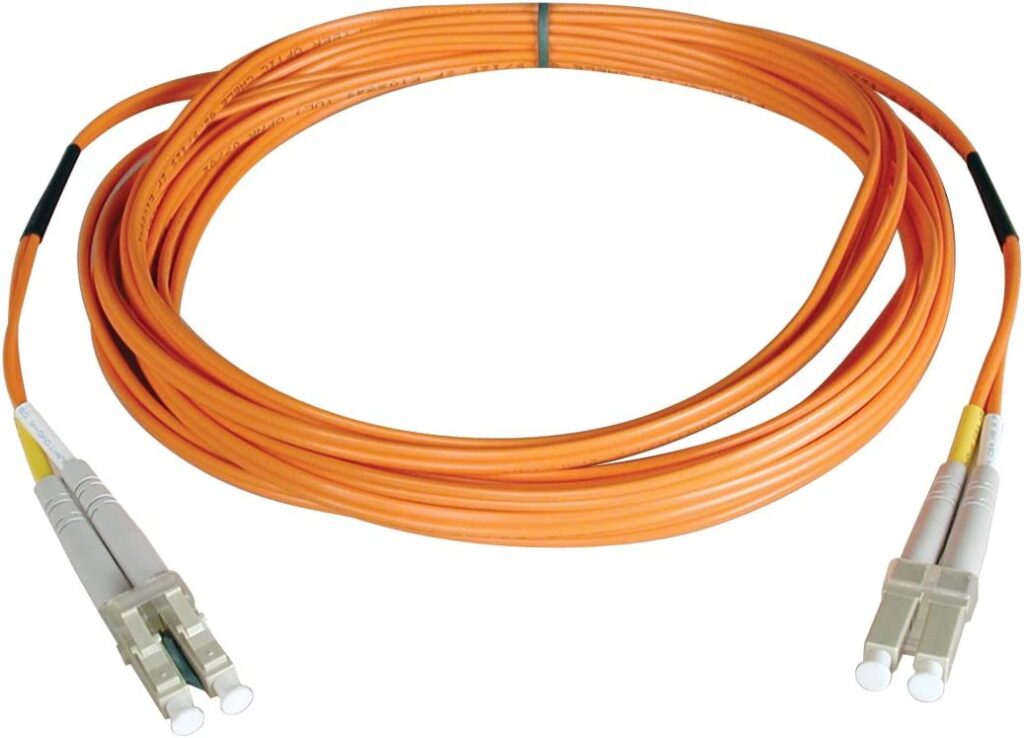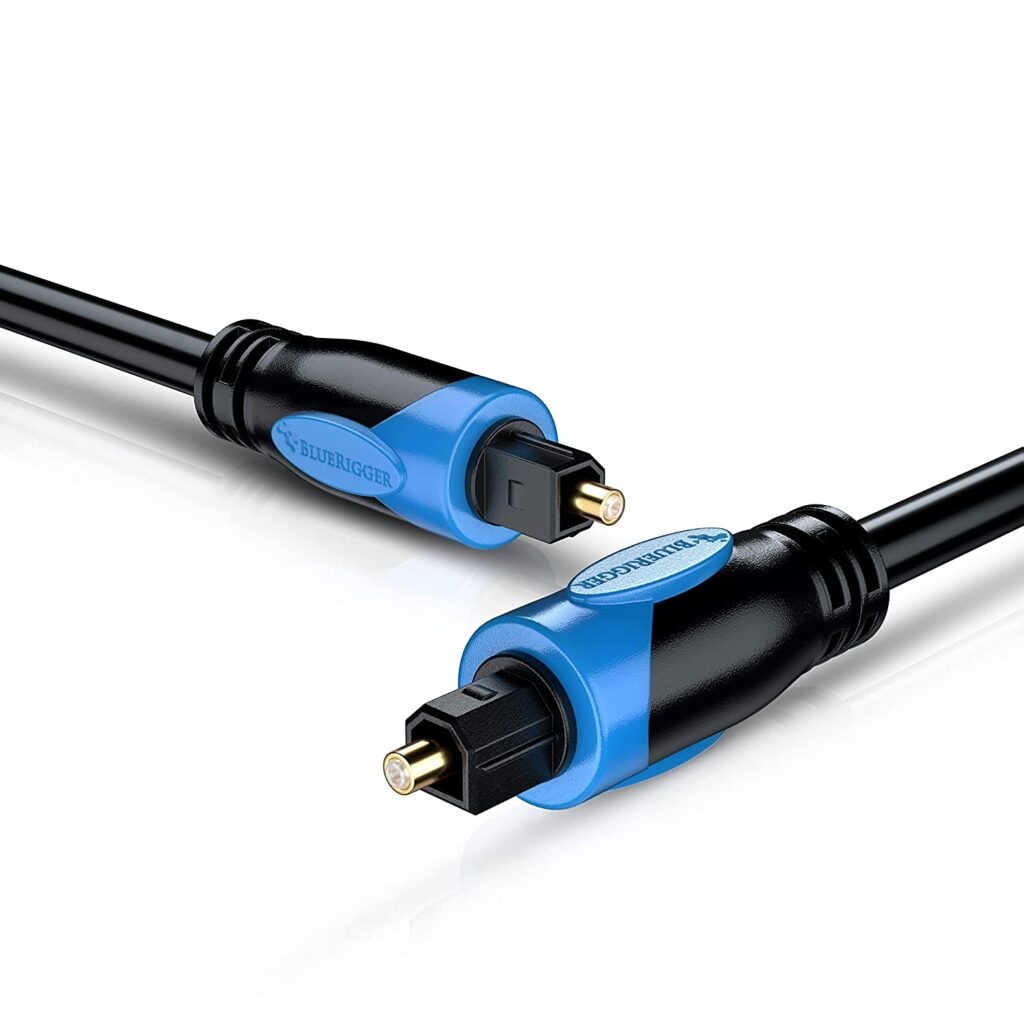Fast data transmission is inevitable in today’s era, isn’t it? The type of cable used plays a vital role in determining the data transmission efficiency. One of the most effective and trendiest cable types is fiber optic cable. Unlike standard cables that use electrical signals, fiber optic cable uses light signals to deliver information, which is quite safer and reliable compared to other cables. They convey a superior sound quality that is suitable for professional applications too.
These fiber optic cables come with a higher bandwidth rate, and the reduced interference makes these cables most suitable for communication. Owing to the fast data transmission speeds over long distances, these cables are quite beneficial for telecommunications and Ethernet networking. Streamline your picking decision for the best fiber optic cables with the selection as below.
List of The Best Fiber Optic Cable
IMAGE | PRODUCTS | RATING | |
Check out the thorough reviews of the best fiber optic cable below.
1. FiberCablesDirect OM3 LC to LC Multimode Fiber Patch Cable
Being the best fiber optic cable on this list, this fiber patch cable enhances your network performance. Not just performance but it is also admirable in terms of durability. Made from commercial-grade materials, the cable is suitable for long-term usage. Typically, it is widely used in sectors like corporate, education, healthcare, finance, government, military/defense, etc.
The 50 µm diameter of the core and 125 µm diameter of cladding suggests that the cable’s interior is quite durable. The outer diameter is 2 mm which is acceptable when it comes to durability. One of the best facets of this multimode optical fiber cable is it can support 10 Gbps speed data transfer flawlessly up to 300 meters of distance. Throughout this distance range, there will be negligible interference and signal loss. The cable guarantees reliable and fast connectivity between media converters, transceivers, switches, patch panels, and many other/10/40g fiber optic appliances.
Key Features
- This laser-optimized fiber cable comes with LC to LC type connector.
- The cable type is OM3 (multimode) and the cable length is 9 meters.
- It fully supports fast Ethernet, 10 Gigabit Ethernet, QSFP+, SFP+, Fiber Channel, ATM, OIF, and other service provider applications.
- Its aqua PVC jacket is water-resistant, flame-retardant, UV-resistant, and also resist electrical interference.
- There is support for OM2 backward compatibility.
- High-performance output is guaranteed because light passes through the multimode fiber after bouncing off between core & cladding.
Pros And Cons
2. TOSLINK Fiber Optic Audio Cable (25 feet)
When you intend to obtain the high-performance output to efficiently drive various equipments, this KabelDirekt cable is quite useful. It promises flawless data transmission without compromising on durability.
List of equipment it can be used for include TVs, soundbars, PCs, video game consoles, speakers, recorders, PlayStation 4, PlayStation 5, Xbox Series X, Xbox Series S, Xbox One, and more. The included HDMI to DVI connector provides great versatility to this cable.
Key Features
- The structure of this digital audio cable shows a flexible PVC jacket subjected to precision manufacturing. This jacket offers durability and protects the cable from various damaging elements.
- 24K gold plating on connectors resists corrosion and keeps the connectors clean.
- The cable is immune to EMI or RFI signal interference.
- It can work with uncompressed PCM audio and compressed 5.1 to 7.1 surround sound systems (including LPCM, Dolby Digital Plus, and DTS-HD High Resolution).
Pros And Cons
3. Tripp Lite Duplex Multimode 50/125 Fiber Patch Cable (LC/LC)
This multimode fiber patch cable guarantees supreme performance all over your local area network. It is precisely made from superior quality glass for longevity. You can connect this cable to your monitor, laptop, and PC.
Being lightweight, it offers great flexibility during installation. The cable belongs to the N520-series and is optimized for 10 Gbps networks. Especially in data center and networking applications, this multimode cable is widely used.
Key Features
- Supported connector types are DVI, HDMI, and VGA.
- Its length is 498 feet.
- The included dual LC connectors offer wide compatibility. These connectors are thoroughly tested to make sure they conform the Tripp Lite’s stringent insertion loss standards.
- For secure connections all over the network, the edges of connectors are color-coded and beveled.
- The cable supports backward compatibility with 62.5 µm fiber.
- The PVC jacket is FDDI and OFNR-rated for durability.
Pros And Cons
4. LC to LC Multimode Duplex Fiber Optic Cable (62.5/125)
If you want to simplify installation hassles then this duplex cable is the best fiber optic cable to consider. It comes with plug & play setup to save you time and effort. No need for onsite termination.
What makes it stand out from the crowd is it supports high transfer rates like Gigabit Ethernet, Infiniband, and Fibre Channel. The ability to present a cost-effective solution suggests that this cable is a budget-friendly option. A list of applications where you can use it is computer networking, healthcare industry, telecommunications, and military and defense.
Key Features
- The cable type is OM1 (multimode).
- Diameter of core and cladding are 62.5 µm and 125 µm respectively.
- The cable is terminated with LC to LC connectors from both ends. These connectors enable easy deployment in any fast Ethernet Network environment.
- The list of compatible devices includes routers, PCs, and TVs.
- Durability is enhanced with OFNR rated PVC zip-cord jacket. This jacket is flexible, lightweight, and non-flammable.
- The cable is thoroughly tested for insertion loss and return loss.
- For use, the cable just needs the removal of stoppers at the ends and insertion in the SFP.
Pros And Cons
5. BlueRigger Digital Optical Audio Toslink Cable
Compatibility with a wide range of audio and video equipment is the key specialty of this BlueRigger fiber cable. It can work with audio amplifiers, soundbars, audio converters, PlayStation, TVs, speakers, projectors, Blu-ray players, A/V receivers, video game consoles, and more. Also, it is compatible with ADAT’s, S/PDIF, Dolby Digital, and DTS.
The exterior layer is made up of quality PVC for durability. Connectors come with gold plating to resist corrosion. Both these features lead to efficient signal transfer along with cable protection. So, this cable is uniquely optimized for higher fidelity. Sound output is always crystal-clear.
Key Features
- The cable length is 3 feet.
- The connector type is optical male-to-male.
- With a thin aluminum alloy shell, this cable can fit in tight corners.
- Cable ends stay protected with removable rubber tips.
- Even when the cord is wrapped, the internal cable does not break.
- It is CL3 rated for easy in-wall installations.
Pros And Cons
6. VANDESAIL 10G Fiber Optic Cable with LC to LC Multimode
If you are worried about cable breaking issues, this one is the best fiber optic cable from VANDESAIL. It is constructed from quality PVC plastic that is durable and comes with environmental protection. This material makes sure the cable will not break or deform easily. Moreover, the interior of the cable is tough and has enough tensile strength. The core is fire-retardant and non-toxic.
Key Features
- The cable type is OM3 laser-optimized multimode.
- The diameter of core and cladding is 50 µm and 125 µm respectively.
- LC connectors come with small form factors. They make the cable suitable for 10 Gigabit applications in data centers and SAN networks.
- Ceramic ferrule guarantees low insertion loss and excellent stability.
Pros And Cons
How To Pick The Best Fiber Optic Cable?
If you are clueless about which fiber optic cable to pick, you may end up with the poor quality output. Let’s go through the following factors that help you choose the best fiber optic cable.
1. Length and width
It is better to avoid using fiber optic cables whose length is above 10 meters. The reason is cables longer than this length usually suffer from transmission reliability concerns. If you are using a fiber optic cable longer than 10 meters then go for the one which contains a signal booster. Width does not influence the performance of fiber optic cables. But thicker cables usually offer better durability.
2. Bandwidth
One of the most vital factors to consider when choosing a fiber optic cable is bandwidth. The standard bandwidth range for these cables is 9 to 11 Hz. Depending on your requirements, go higher or lower. The bandwidth requirement also depends on the type of audio system you use.
For larger audio systems like a home theater, look for a fiber optic cable with higher bandwidth than that mentioned above. It would provide It will provide higher sound clarity and also enhances your visual experience. For smaller audio systems, a fiber optic cable with a bandwidth lower than 9 Hz will function well.
3. Durability
When you buy a fiber optic cable from a reliable manufacturer, durability is not a concern. Make sure to appropriately check whether it is durable or not before purchasing. Those cables with nylon or PVC jacket are durable. This kind of jacket defends the cable against dirt, dust, and other damaging elements. To ensure protection against corrosion, look for a fiber optic cable with a gold-plated connector. In short, make sure the cable is built from high-grade materials.
Single Mode Fiber Optic Cable VS Multimode Fiber Optic Cable
Two of the prominent types of fiber optic cables are single-mode and multi-mode. To avoid confusion when choosing the best fiber optic cable, let’s go through the key differences between them:
Single mode and multimode fiber optic cables prominently differ based on bandwidth, fiber core diameter, light source, wavelength, distance, color sheath, and cost. Single mode implies that the fiber allows one type of light mode to transmit at a time. On the other hand, multimode implies that the fiber can allow multiple modes of propagation. Single mode fiber optic cables are suitable for installations above 300 meters.
Now let’s explore few more aspects based on which these two cable types differ:
1. Core diameter
The core diameter of single mode fiber optic cable is quite smaller than that of multimode. The core diameter for single mode fiber cable is 9 µm and that for multimode fiber, it varies from 50 µm to 62.5 µm. Larger core diameter of multimode fiber optic cable makes sure the cables have higher light gathering ability. Moreover, a larger core allows multiple light rays to simultaneously travel through the core.
2. Bandwidth
The bandwidth of multimode fiber optic cable is less due to multiple light modes. Theoretically, the bandwidth of single mode fiber optic cable is unlimited since it enables only one light mode to transmit at once.
3. Transmission distance
The transmission distance depends on your type of application and accordingly, the choice of cable varies. Multimode fiber optic cables are more suitable in data centers and they support data transmission in the range of 300-400 meters. On the other hand, for those applications that demand transmission up to several thousand meters, you can go for single mode fiber cables.
4. Which one to choose, single mode or multimode fiber optic cable?
Single-mode optical fiber cables are beneficial in terms of bandwidth and long-distance transmission. Larger core diameter in multimode fiber cable ensures more efficient data transmission. Moreover, multimode fiber cables offer installation flexibility and are affordably priced. Single-mode fiber cables need care and precision to terminate.
Frequently Asked Questions When Picking The Best Fiber Optic Cable
1. Does the thickness of an optical fiber cable play a vital role in the quality of the output?
The optical fiber cable’s thickness must be enough to prevent the light from running away and blocking interferences. If these requirements are not met, it may pose a concern. Generally, thin optical fiber cables provide decent sound quality compared to thicker ones. But in terms of durability, thick optical cables are more durable.
2. How does gold plating on the connectors helpful?
The presence of gold plating on the connectors enhances the resistance against corrosion. Essentially, it does not directly influence the sound quality. However, for better data transmission, the presence of gold connectors is important. Under extreme humidity and temperature, gold plating enhances the connectors’ life.
3. Mention the minimum bend radius for a fiber optic cable?
For those fiber optic cables not subjected to pulling tension, their radius must be at least 10 times more than that of the cable diameter. A multimode fiber optical cable with an exterior diameter of 3 mm comes with a minimum bend radius of 30 mm. Keep in mind when the cable is subjected to tensile load or pressure, the bend radius may be higher.
4. What is the material used in fiber optic cable?
Fiber optic cables are made from various types of materials and components. Usually, the core strands are prepared from a combination of plastic and glass. In most cases, it is found that plastic fiber optic cables are easier to use and more economical than other types. This is because of properties like flexibility, lightweight design, and resistance to shock and bending.
Optical fiber cables made up of glass are more durable than those made up of plastic. They are perfect for use over long distances, even in extreme environments. When choosing the best fiber optic cable for long-term usage, material construction is important to consider.
5. Are fiber optic cables reliable and safe to use?
Despite being thin and lightweight, fiber optic cables are sturdily built. It suggests that they can sustain greater forces and hence, they are less prone to damage across long-term usage. Moreover, they are unaffected by poor weather, moisture, and extreme temperatures. Those fiber optic cables made up of glass don’t carry current and hence, they ensure zero fire hazards even when they are subjected to damage.
Final Thoughts
Obtain outstanding sound quality output with the best fiber optic cable discussed above. Whether for casual or professional usages, these cables will not let you down in terms of quality and performance. They are suitable for data transmission across long distances without any significant signal loss. Even in challenging environmental conditions, they continue to perform well. Their outstanding durability and fast data transmission speed make them versatile.
Enjoyed this fiber optic cable review? Then be sure to check out our other guides.




